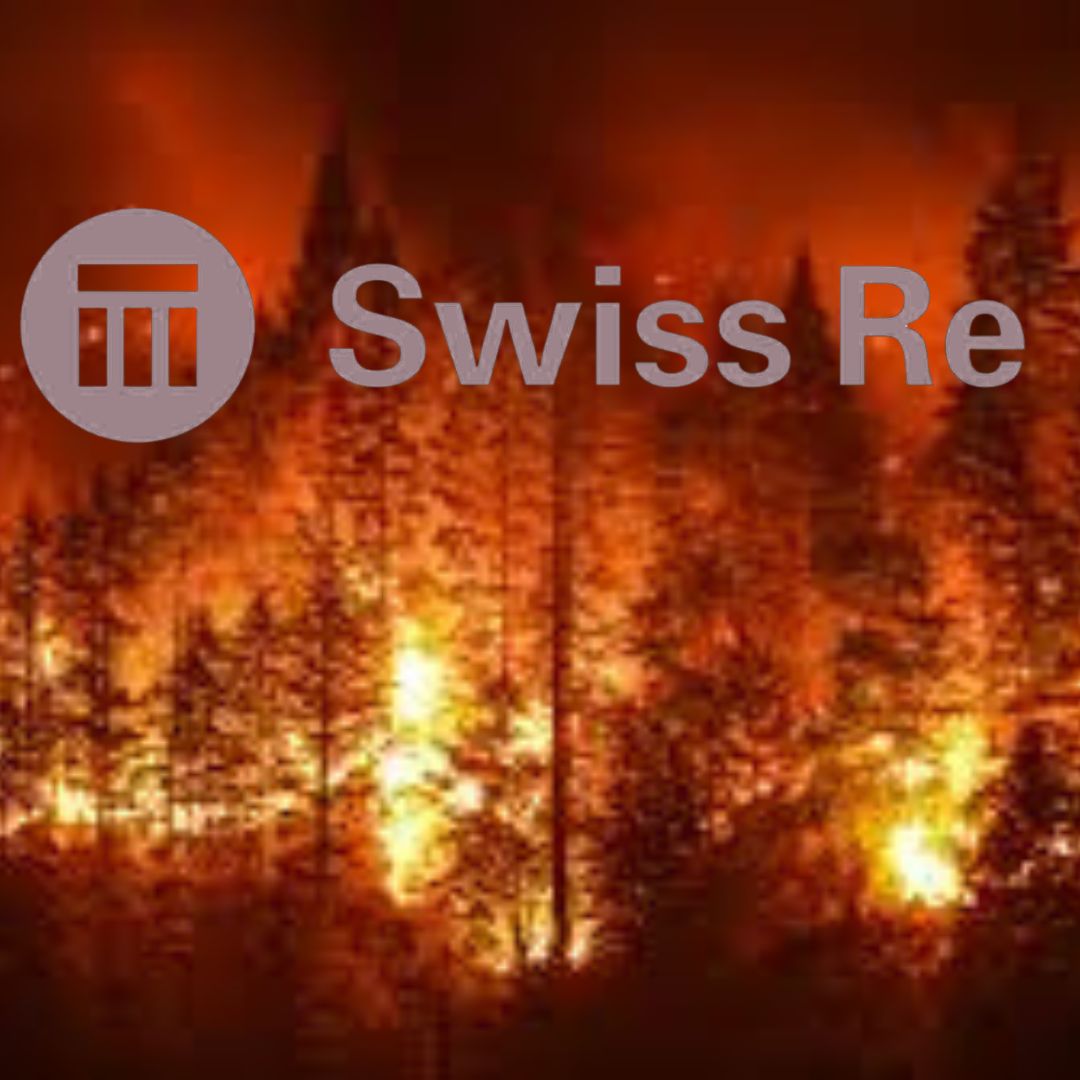Swiss Re, the global reinsurance leader, drew valuable lessons from California’s devastating wildfires loss to help European insurers prepare for increased wildfire threats. The reinsurer highlights how fast-growing wildfire activity—led by climate change, urbanization, and human actions—is significantly threatening European insurers.
Wildfires in California: A Crisis That Offers Valuable Lessons
California’s Wildfire Crisis Provides a Wake-Up Call
In early 2025, Los Angeles County experienced two massive wildfires that consumed over 30,000 acres and destroyed over 16,000 structures. According to Swiss Re, the catastrophe left insured losses of approximately USD 40 billion, one of the costliest wildfire catastrophes ever recorded. The combination of exceptionally dry conditions, prolonged Santa Ana winds, and depleted emergency response systems converted the fires into mass catastrophes.
By May 2025, insured losses from wildfires globally were already at record levels higher than ever before in a single year, highlighting the intensity and expense of these catastrophes globally.
Wildfires in Europe: A Fast-Growing Climate Threat
Europe’s Increasing Wildfire Exposure
Europe, which is the fastest-warming continent on Earth according to the European Environment Agency, is becoming progressively at risk of wildfires. Swiss Re refers to several high-profile cases in recent history: Portugal’s 2017 wildfires, Greece’s 2024 Athens-area wildfires, and London’s 2022 city-center wildfires during the heatwave.
Data from the European Forest Fire Information System (EFFIS) illustrate a rising trend in the number and area of forest fires on the continent. Swiss Re warns that countries such as France, Spain, Portugal, Italy, and Greece shortly anticipate losses from wildfires of over EUR 2.5 billion.
Wildfires and the Wildland-Urban Interface Risk
The Wildland-Urban Interface: A Critical Risk Zone
One of the largest problems is residential and commercial growth moving out into the wildland-urban interface (WUI)—the place where human development and wildfire fuels overlap. In California alone, homes in those risky areas have increased 23% in 30 years. Europe is experiencing the same phenomenon. More than 60% of industrial parks in Portugal alone are located near forest areas subject to fire.
Swiss Re urges its European governments and city planners not to emulate these high-exposure development patterns. It urges more prudent land-use planning choices and stricter zoning codes to contain future wildfire risk.
Wildfires Fuel Insurance Gaps and Market Pressure
Growing Insurance Gaps and Market Pressure
Not only is wildland fire risk increasing, but it is also creating affordability and availability concerns for the insurance market. Insurers in California have been forced to continue doing business in high-risk areas due to growing claims and regulatory issues. A handful have exited completely.
Swiss Re mentions that in 2024 the EMEA region’s protection gap for natural catastrophes was 70%, significantly higher than 43% in the US. The company emphasizes that pricing wildfire coverage must fully consider actual levels of risk. In countries like Greece and Portugal, where the wildfire risk is high but penetration by insurance companies is low, government subsidies might be needed to provide protection to exposed populations.
Wildfires Demand Smarter Risk Modelling Approaches
Enhancing Wildfire Risk Modelling
One of the largest obstacles in wildfire risk management is model complexity. In contrast to floods or earthquakes, wildfires are substantially human-driven by factors such as land use, ignition, and building practices. Traditional catastrophe models have a tendency to overlook these aspects.
In turn, Swiss Re has developed more sophisticated instruments, including its CatNet® platform, incorporating topography, historical fire activity, and weather forecasts to calculate potential wildfire hotspots. The reinsurer also is collaborating with Bellwether to provide sophisticated, location-based wildfire risk predictions using over 600 layers of geospatial data. Deployed today in North America, Swiss Re plans to extend these capabilities into Europe.
Wildfires and the Risk of Accumulation
Managing Accumulation Risk and Portfolio Diversification
Another area of emphasis is accumulation risk—piling up assets that are insured in wildfire-risk locations. Swiss Re suggests insurers price exposure hotspots, diversify their books, and use strict underwriting controls. Failure to do so may result in out-of-proportion losses from a single event of a large wildfire.
Wildfires and Legal Risk Complexity
Complex Claims and Legal Risk
Wildfire loss can involve more than just fire. Additional costs can include displacement, cleanup, smoke pollution, landslides, and legal fees. In California, insurers have recovered losses in the past by subrogating against utilities companies—even where negligence has not been proven—through specialized doctrines of law. While similar legislation is not prevalent in Europe, subrogation could play an added role in future lawsuits, Swiss Re reports.
Wildfires Prevention Over Suppression Strategies
Prevention Over Suppression
Both American and European wildfire strategies in the past have depended more on firefighting than on preventative avoidance of risk. Swiss Re points out that this must be reversed. Nations such as Portugal’s post-2017 laws requiring vegetation clearing around buildings indicate the benefits of prevention-based legislation. Prevention is still unevenly enforced across the EU, however, due to limitations of resources.
Wildfires Recovery: Building for Long-Term Resilience
Rebuilding for Long-Term Resilience
Reconstruction after a wildfire will generally prioritize speed over security. Swiss Re recommends reconstruction is rendered safer by stricter building codes, the use of fireproof materials, and changed urban planning. Insurers can play a role by designing premiums to internalize risk and enable more informed rebuilding decisions.
Conclusion: Preparing Europe for Wildfires Ahead
Conclusion: A Call for European Insurers to Act Now
While Europe has not yet suffered wildfire losses on the scale of California’s, all indications are that its exposure is increasing. With the aid of experience in the U.S. and by applying Swiss Re’s advanced tools and techniques, European insurers can improve risk management, ensure long-term insurability, and offer more protection to individuals across the continent.




